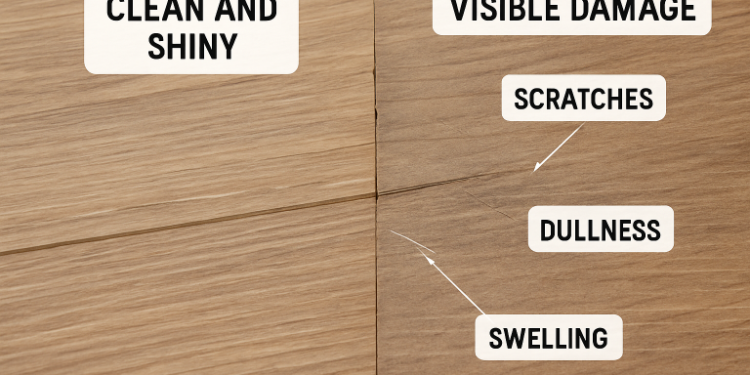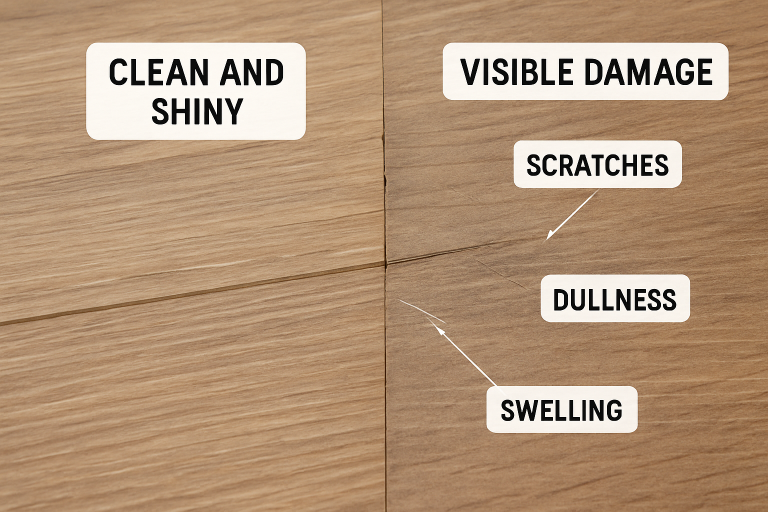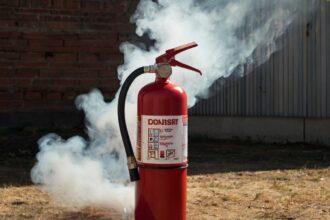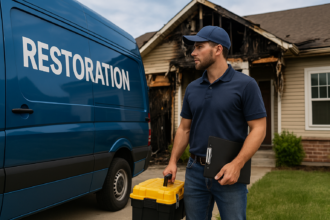Signs Your Laminate Flooring Needs Care: Repair, Deep Clean, or Replace?

Table of Contents
- 1 The Appeal of Laminate Flooring
- 2 Common Laminate Flooring Concerns
- 3 Should You Repair or Restore?
- 4 Knowing When It’s Time to Replace
- 5 Steps to Take Before a Replacement
- 6 Cleaning and Maintaining for a Longer Floor Life
- 7 Future-Proofing Your Flooring Investment
- 8 Summary: Decision Tree for Laminate Floor Care
The Appeal of Laminate Flooring
Laminate flooring continues to be a popular choice among homeowners for its durability, affordability, and ability to mimic the look of wood or stone. It offers a versatile style that suits a range of interiors, from modern spaces to traditional homes. Beyond its aesthetic value, laminate is designed to withstand everyday wear, making it a practical option for busy households.
Over time, however, even laminate flooring shows signs of needing attention—whether through scratches, warping, or dullness. Regular upkeep not only extends its lifespan but also maintains its appearance. Simple routines like gentle cleaning, avoiding excess water, and using protective pads can make a significant difference. Resources on how to maintain laminate flooring in Tulsa provide practical guidance for care, whether the goal is repair, deep cleaning, or replacement. Knowing when to act ensures your floors remain functional and attractive for years.
Common Laminate Flooring Concerns
Despite its many strengths, laminate flooring isn’t invincible. Minor surface scratches, tiny scuffs, and lifted panel edges are fairly routine woes, especially in active living spaces. Most of these minor imperfections can be fixed with simple repairs. However, more severe issues do arise. Laminate’s layered construction makes it susceptible to moisture-related problems, such as warping, seam swelling, and even delamination. Excessive sunlight can also fade or discolor specific areas, creating an uneven finish. Some of these problems—if widespread or persistent—can cut short your floor’s useful life.
Knowing the difference between small dings and major structural issues is essential. Stains, lingering odors, or soft spots when walking on the floor could signal deeper problems beneath the surface. If you notice panel separation, bubbling, or large areas of discoloration, it might be more than just a cosmetic concern.

Should You Repair or Restore?
When issues arise, the big question is whether they’re worth repairing. Small scratches and nicks can often be camouflaged with laminate floor repair kits, crayons, or putties that closely match your flooring’s color. Edge lifting from improper installation or shifting can sometimes be reversed by resecuring or replacing a single board. If damage is localized, spot repairs are economical and effective.
Restoration products, such as polishes made for laminate, can revitalize dull surfaces. Still, these solutions only work when wear is superficial. They won’t resolve water damage, deep gouges, or swelling. Regular gentle cleaning is the most important factor in lengthening the lifespan of your laminate floors, preventing damage before it becomes extensive.
Consistent maintenance is simple but powerful: sweep frequently, clean with a damp (not wet) mop, and strictly avoid harsh chemicals and abrasive tools. Many homeowners have found that successful laminate floor care is a blend of quick spot fixes and regular, gentle cleaning routines tailored to the conditions of their home and region.
Knowing When It’s Time to Replace
There’s a tipping point at which even the best repairs and deep cleans won’t fully restore your floors. If you notice broad water damage, soft, spongy planks, persistent musty odors, or ongoing separation and swelling along seams and boards, replacement is likely the only path forward. Cumulative damage—such as years of spills, flooding events, or neglect—can eventually compromise the subfloor below, making replacement urgent.
Another growing consideration is sustainability. Modern laminate flooring manufacturers are advancing eco-friendly and recyclable plank options, helping homeowners reduce their environmental impact as they refresh their spaces.
Steps to Take Before a Replacement
Before pulling up old floors, start with a thorough inspection. Check high-traffic zones, edges near appliances, and any areas regularly exposed to moisture. Use a flashlight to help spot swelling, bubbling, or soft planks. Consult with flooring experts—getting multiple opinions often leads to a more cost-effective and informed decision.
Budgeting is crucial. Account for removal, new materials, labor, and disposal. Consider your timeline, especially if you’re planning around busy seasons or family gatherings. Some flooring retailers offer digital planning tools that let you visualize patterns, colors, and features before you commit, streamlining the process and preventing expensive mistakes.
Cleaning and Maintaining for a Longer Floor Life
Day-to-Day Care Tips
To avoid unnecessary repairs, develop a cleaning routine. Use microfiber dusters, avoid soaking wet mops, and address spills immediately to prevent seepage into seams. Place entry mats at doors to capture grit and debris before it hits your floor.
Seasonal Deep Cleaning Routines
Set aside time for a thorough clean every season. Move furniture and rugs to vacuum or sweep underneath. Follow up with a laminate-friendly cleaner and limit water exposure. Stubborn stains can be spot-treated, but always test products in an inconspicuous area first.
Preventative Measures
Furniture pads, area rugs in high-traffic spots, and using a humidifier or dehumidifier to control indoor climate will keep your flooring in optimal condition. These steps are essential in regions with fluctuating weather, where humidity levels can impact the laminate’s stability over time.
Future-Proofing Your Flooring Investment
As you update or replace your flooring, look for products with long warranties and environmental certifications. Certifications like FloorScore or Greenguard mean a product was designed for durability and indoor air quality. Many leading brands provide digital samples and augmented reality tools to help you visualize how materials and styles will fit your home before installation. This tech-driven approach protects your investment by increasing satisfaction and reducing waste.
Design trends are shifting toward realistic wood looks, wider planks, and textures that deliver practical and visual appeal.
Summary: Decision Tree for Laminate Floor Care
When faced with aging or damaged laminate floors, start with this decision sequence:
- Is the damage localized (e.g., a scratch or single swollen seam)? Attempt a targeted repair.
- Do you have multiple areas with dullness, light stains, or minor scratches? Consider laminate restoration products and a deep clean.
- Do you see widespread water damage, warping, soft spots, or persistent odors? Replacement is likely your best bet.
For further support, consult expert flooring installers and check forums or community resources for localized advice. Keeping up with maintenance and the latest trends will help extend the life of your flooring and ensure long-term satisfaction with your home investment.

